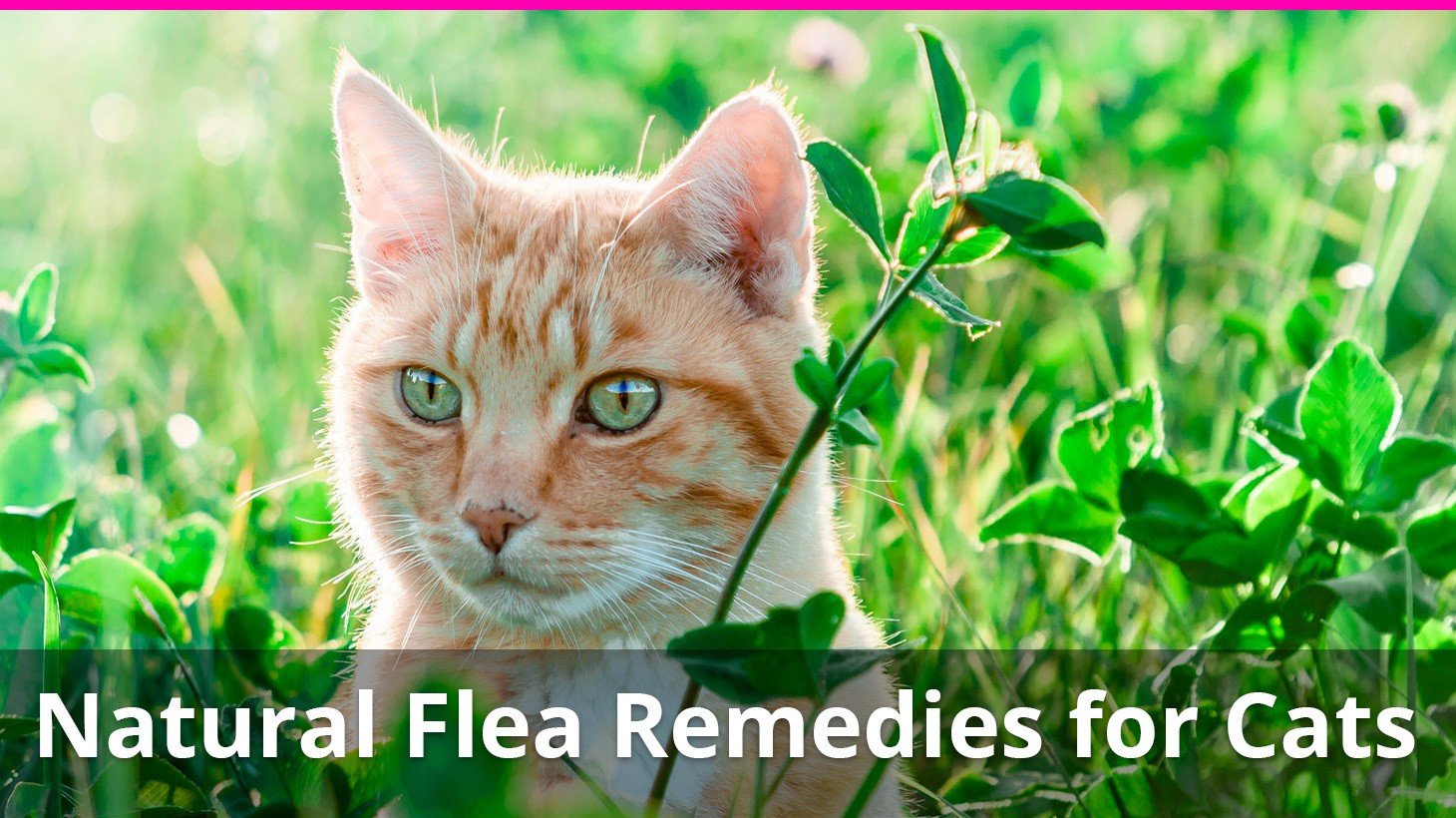Cats get fleas: it’s a fact of life. Even for indoor cats it can be an unavoidable problem, and for outdoor cats who interact regularly with other neighbourhood felines it can be a problem that occurs multiple times a month.
As a cat owner, it’s your responsibility to help alleviate the misery of fleas by treating your cat for them, either as a preventative measure or after you notice them scratching.
However, there’s a large subset of pet parents who don’t like exposing their cats to the harsh chemicals of traditional, shop-bought flea treatments. Aside from the fact that you can never really be sure of what’s in them, such chemicals can be harmful to cats and can cause reactions in felines who are allergic or particularly sensitive.
Most cat owners are aware that natural, do-it-yourself flea remedies exist, but are unsure of how exactly to get started.
This article outlines ten natural methods that you can use to treat your cat for fleas in the safety of your own home. Not only do you know exactly what goes into these remedies, but you can be sure that they’ll be safe for your cat and just as effective as any shop bought remedy or preventative.
Article Contents
What to Consider Before using a Natural Remedy
Before jumping into the world of natural flea treatments, it’s important to understand a few things:
Not all Natural Remedies Work
Unfortunately, a lot of easy recipes and methods you can find online for flea treatments simply don’t work, or work so rarely that many cat owners just give up and buy bottled treatments from their closest supermarket. The ones listed in this article are the best of the best, but do bear in mind that some of them still don’t match up to the chemical solutions that are commercially available.
If you’ve tried every natural flea treatment on this list and your cat is still plagued with itching, your best option is to see your vet and ask for a recommendation for a gentle, non-harmful chemical treatment that will be safe to use on your cat.
Holding your own ethical standards above your cat’s health is simply wrong; your cat is under your care and it’s your duty to keep him or her the healthiest you possibly can. Natural treatments are great, but if they’re not working then any good vet would advise you to move on to more common remedies.
Some Brands Claim to be ‘Natural’ and Aren’t
These days, ‘all-natural’ is a powerful buzz-word. Companies plaster green labels all over their packaging in the hope that environmentally-conscious consumers will be attracted to their products.
In reality, it’s quite difficult to find commercially available products that really are completely natural and don’t have any sort of additives or preservatives.
This is why, if you’re really concerned about treating your cat with synthetic chemicals, it’s best to make flea remedies at home.
Just Because a Remedy is Natural Doesn’t Mean it’s Automatically Safe
Many of the treatments on this list can be harmful if used in the wrong way. Even something as benign as lemon juice can cause significant damage if you accidentally spray it in your cat’s eye.
Use all of the solutions in this article with extreme caution and, if something seems to be going wrong or if your cat is uncomfortable, stop immediately.
All-natural doesn’t automatically mean completely safe, and as an owner your top priority should be your cat’s safety and well-being.
Cat-Based Repellents vs. Environmental Repellents vs. Fast acting Remedies
Some of the treatments listed in this article are cat-based repellents, which means that you apply them weekly or monthly to your cat to limit the chance of flea infestation.
Others are environmental repellents, which means that they’re applied to your house or yard to make the environment less desirable for fleas.
Finally, there are fast acting remedies, which should be used after your cat has contracted fleas to get rid of them.
For the best results, you should use all three; cat and environmental preventatives to minimise the chance of your feline friend ever coming into contact with fleas, and then a fast-acting treatment in case the preventative measures fail.
Fast Acting Home Remedies for Flea Treatment
Lemon Juice
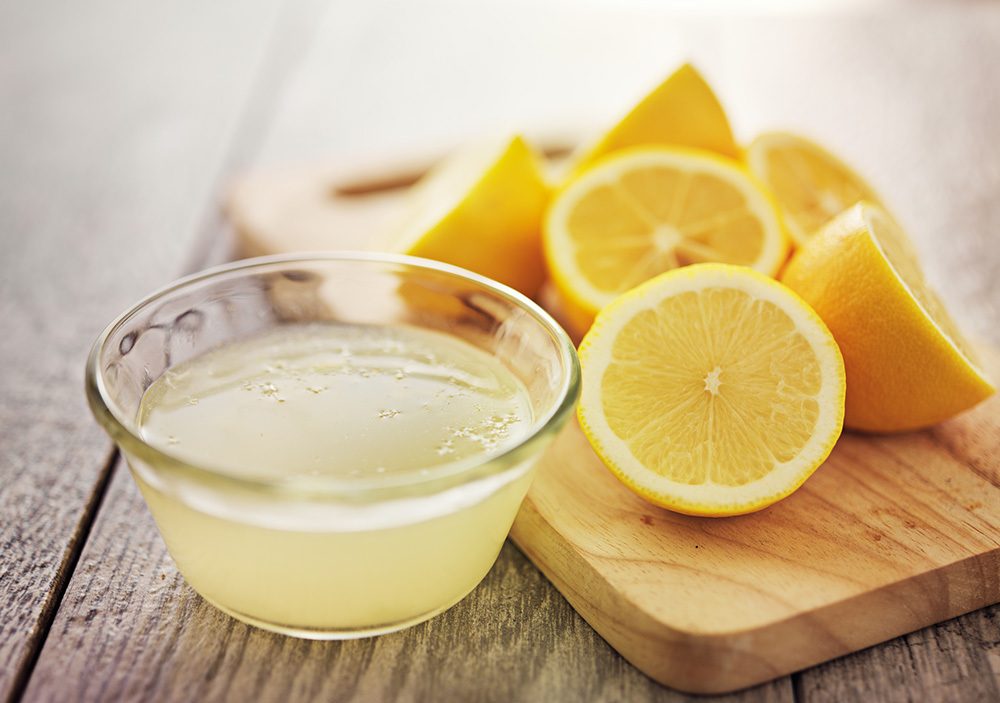
Lemons contain citric acid, which is a natural flea-killer. As a cat owner, you can harness this natural power and turn it into a flea preventative! Use the method below to make a lemon-based spray that will have your cat flea-free in no time.
For this method, you’ll need four lemons, four cups of water, a saucepan, and a spray bottle.
- Slice the lemons into sections, making sure to score the peel with a knife (this will help to release more oils in later steps).
- Using a saucepan, heat the water to boiling
- Pour the water over the lemons and leave to soak overnight. For the best results, make sure to cover the top of the bowl.
- After the lemons have finished soaking, pour the solution into the spray bottle. Make sure that it’s free of pips and don’t include the lemon slices (if the solution is cloudy, try filtering it with a sieve or a soft cloth).
- Spray onto your cat once every few days to kill fleas. You can also try spraying your cat’s bed or favourite blanket to help curb the flea infestation.
Important to note:
If your cat has particularly sensitive skin or if you notice irritation after using the spray, try diluting it a few times. This will reduce the flea-killing power, but it will keep your cat’s skin happy and healthy.
Aloe Vera and Cayenne Pepper
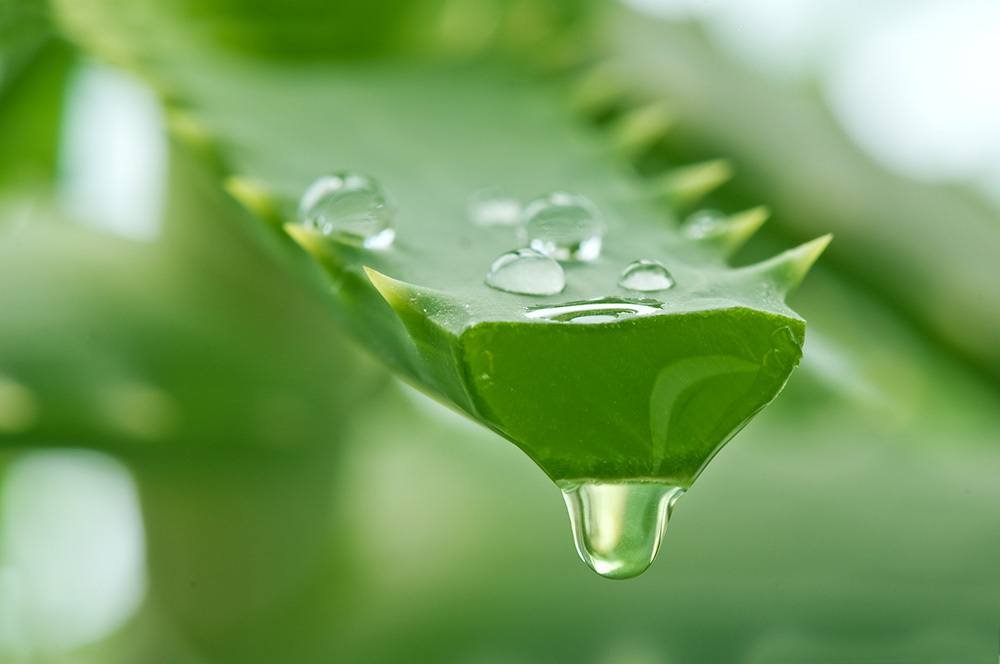
Aloe vera is a miracle plant if such a thing exists. Its juice has antibacterial properties and cools and soothes inflammation. This makes it great for treating flea bites and when mixed in with a little cayenne pepper it makes a great, multi-action, flea-killing spray.
You’ll need two cups of aloe vera juice (available online and from some health stores), 1/2 a teaspoon of cayenne pepper, and a spray bottle.
- Mix two cups of aloe vera juice with half a teaspoon of cayenne pepper.
- Pour the solution into a spray bottle
- Spray lightly on your cat once every three days, taking care to avoid the eyes, mouth, and nose (the pepper burns!)
This is a great, quick-fix spray for killing fleas. If your cat has any nasty flea bites, make use of the aloe vera juice and spread it gently over the bites for extra healing effect.
Important to note:
Even if you have an aloe vera plant at home, do not attempt to make your own aloe juice. Parts of the plant can be highly toxic to cats. Leave it to the professionals and buy a bottle ready made.
Diatomaceous Earth

Diatomaceous earth is highly toxic to fleas, making it one of the most potent flea killers around.
You’ll need a bag of food grade diatomaceous earth and some gloves
- Making sure to wear your gloves, sprinkle the power on surfaces in your home where your cat frequents, including cat beds, blankets, furniture, and outdoor surfaces.
- Try to keep the powder dry as it loses potency when wet.
- Do not spread any on your cat’s skin directly, as it will cause dryness.
- After a few days, vacuum up the remaining product.
Our review process is unbiased and based on extensive research. If you buy through the links on our site, we may earn a commission.
Important to note:
As mentioned, you’ll need food grade diatomaceous earth to kill fleas with. This is because some kinds of diatomaceous earth can be harmful to cats and humans due to chemical additives. The food grade kind, however, is completely safe and can be bought in most gardening stores or online. When handling the product make sure to wear gloves, as it can be damaging to the skin, and never sprinkle it onto your cat directly.
Neem leaf

Neem leaf comes from a tree native to India, Sri Lanka, and Burma and has been used for medicinal and anti-parasitic purposes for thousands of years, including on pets.
However, not all neem products are right for cats. When choosing a product, avoid anything with neem oil in it and instead look for neem leaf products.
Like other essential oils, neem oil is highly concentrated and may be harmful to cats. The leaf, on the other hand, is completely harmless. It can be prepared in two different ways:
You’ll need half a kilogram of neem leaves, two and a half litres of water, and a spray bottle
- Pour the water over the neem leaves and allow them to soak overnight
- When soaking is complete, grind the leaves in the solution and then strain, first using a sieve and then a soft cloth.
- Spray liberally on your cat’s fur, avoiding the eyes, mouth, and nose.
You’ll need 250g of dried neem leaves and a small amount of water
- Crush the neem leaves into a fine powder
- Add water until a paste-like consistency is achieved
- Apply the past to your cat’s flea bites. For long-haired cats, a comb may be needed to part the hair so the skin can be reached
Important to note:
The neem leaf spray is best for killing fleas, while the paste helps to soothe inflamed bites.
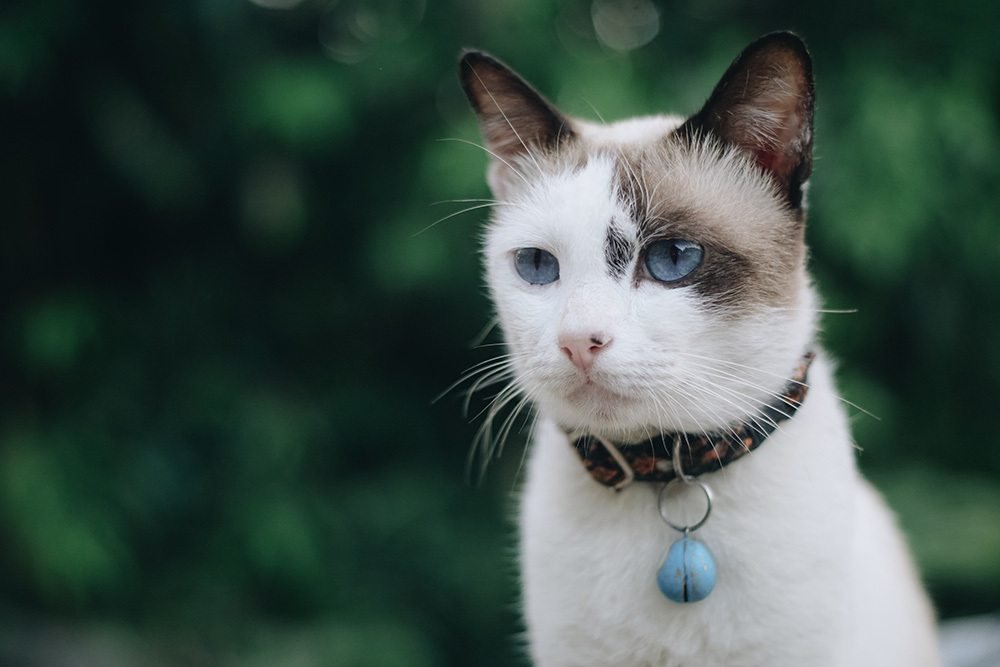
Cat-Based Flea Repellants
Lavender Spray

While lavender smells heavenly to humans, fleas can’t stand the pretty purple flower. This makes the plant not only an ideal environmentally-based preventative (keep reading to find out how!), but also a good cat-based preventative.
Use the following method to make a lavender spray that will help keep fleas away from your precious feline friend.
- You’ll need some fresh lavender (dried lavender also works, but not as well), a spray bottle, some water and, if your cat is particularly fluffy, a comb.
- Let the fresh lavender soak in a jar overnight (10-16 hours for best results).
- Once the soaking process is complete, strain out the lavender pieces using a sieve or a soft cloth and transfer the liquid collected into the spray bottle.
- Spray the lavender solution over your cat, making sure to avoid the eyes, mouth, and nose.
- If your cat has long hair, comb the lavender solution through and make sure that some of it reaches the skin. If your cat has shorter hair, the solution should be able to permeate without issue.
- Repeat this process every week for maximum effect, or every few weeks for basic coverage
This method is great because it’s simple, uses ingredients that most people can get easily, and also makes your cat smell like lavender for the foreseeable future! What’s not to like?
Important to Note:
Some people recommend replacing the fresh lavender with lavender essential oils. This is extremely dangerous. Essential oils smell so great to humans because they’re extremely concentrated. While some are safe for cats, others are so concentrated that they can be harmful and it’s next to impossible to tell which is which by looking at the bottle. Unless you’ve got a specific recommendation from your vet, stick to fresh lavender for the best results.
Natural Flea Collars
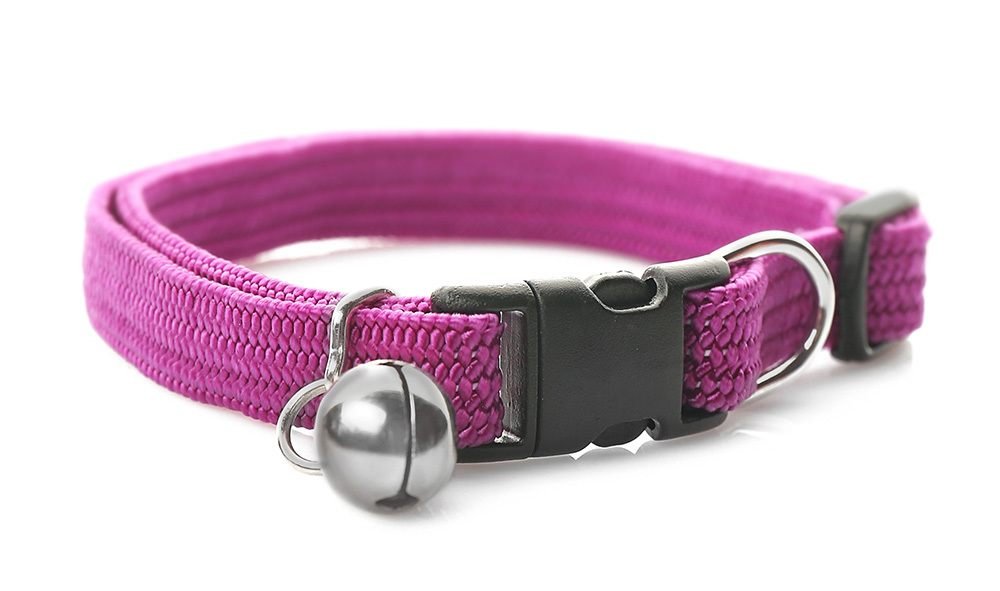
It may surprise a lot of cat owners to know that you can actually make a flea prevention collar for your cat with your own two hands. This type of collar isn’t full-proof, but it’s far better than nothing when it comes to keeping the fleas away from your precious kitty. To make one, follow the steps below.
- You’ll need a soft nylon or cotton collar, unflavoured vodka, and cedarwood essential oil
- Mix half a teaspoon of vodka with one drop of the cedar-wood essential oil
- Soak the collar in the mixture and leave to dry
- Once dry, buckle the collar around your cat’s neck.
- ‘Recharge’ the collar every week by soaking it in the same vodka and cedar oil mixture
Important to Note:
A large part of this article condemns the use of essential oils on cats, and this method doesn’t undo that criticism. This mixture is only safe because such a small amount of the essential oil is being used and it’s being soaked into a collar, where a cat won’t be able to ingest it so easily. Aside from in tiny, controlled doses like this, don’t give your cat essential oils!
Environmental Flea Repellents
Lavender (again!)
As mentioned before, lavender is a natural flea preventative and making fresh lavender into a spray is a great way to prevent fleas. This benefit can also extend outside of your cat’s fur and into your environment in two ways.
- Plant lavender in your garden! Lavender is a sweet-smelling, beautiful, purple plant that no one in their right mind would object to having in their front garden. As it turns out, planting lavender in your yard is a good way to create a barrier of protection against fleas around your property. If you’ve got a green thumb, or even just mildly enjoy gardening, try planting a few bushes. An added bonus of this is that you’ve got a ready supply of fresh lavender to make up some spray whenever you need.
- Use the lavender spray on other surfaces. Aside from combing it into your cat’s fur, try spraying your concoction on other surfaces in your house. Your cat’s favourite blanket, your bed, other furniture: get creative with your spraying! Not only will this make your home smell wonderful, but it will also detract fleas from coming into your home and wreaking havoc.
Cedar Chips
Fleas hate the smell of cedar. Use the following steps as a guide to getting rid of fleas in your yard with the humble wood.
- Buy your cedar chips from a garden store. Speciality stores are more likely to have a choice when it comes to the size of the chip. For maximum flea prevention, smaller chips should be used as they have a larger surface area and therefore a stronger smell
- Focus on the areas where your cats tend to be and sprinkle the chips there. If you’d rather not drown your entire yard in cedar, focus on the areas your cat likes to sleep or play.
- Pay attention to areas around the boundary of your yard. This is the most likely spot that your cat will be interacting with other animals and flea infestation can occur. Spreading a thin line of chips around the inside of your garden fence will act as a scent-barrier to any invading fleas.
Nematodes
Nematodes are live, worm-like insects that prey on fleas and can be bought at most garden stores. To reap their full, predatory benefit, adhere to the following steps.
- Mix your nematodes with a large amount of water. The packaging should specify how many scoops of nematodes to a given amount of water.
- Spray the mixture over your lawn
- To ensure the nematodes don’t die off, water your lawn consistently every two days to keep them moist and happy
- Reap the benefits!
Soap and Water
It probably sounds ridiculously obvious, but making sure that your environment is clean works to prevent fleas.
Wash anything that your cat uses regularly, including bedding, furniture covers, and even soft toys.
Soap and hot water can kill flea eggs, stopping an infestation before it even really starts.

